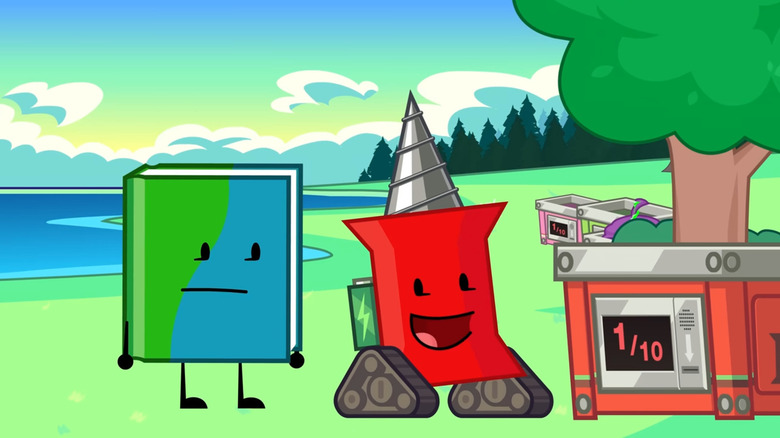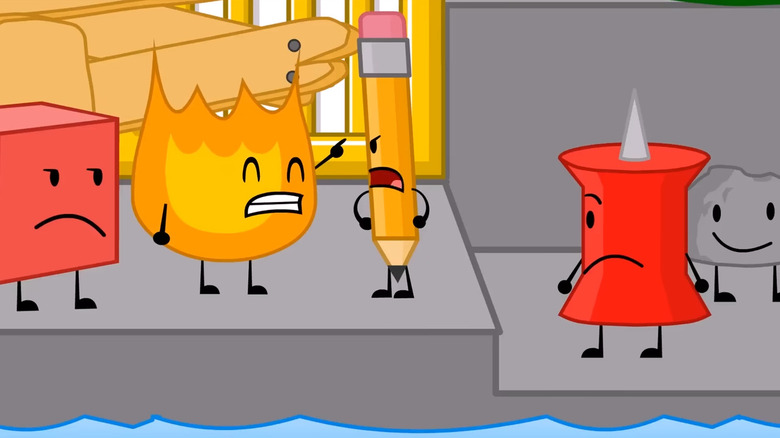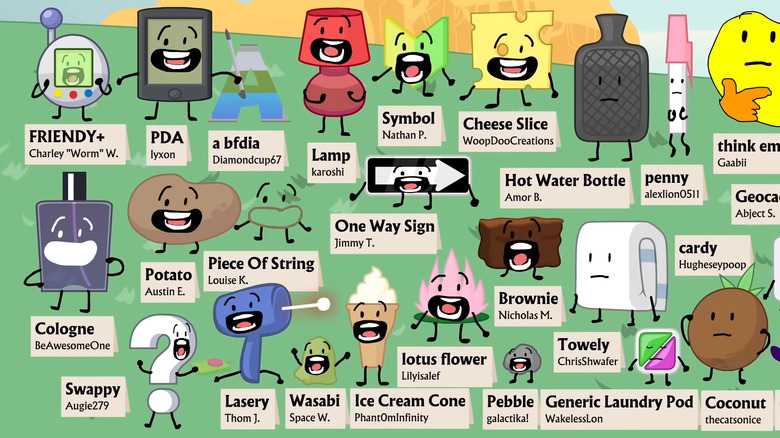What Are Object Shows And Why Is Gen-Alpha Obsessed With Them?
If you spend any time at all with people under the age of, say, 12, you might — might — know about Object Shows. An Object Show is, for the grown-ups, an animated series that features a large cast of anthropomorphic inanimate objects that compete in "Survivor"-style competitions. The objects are typically designed in a simple, stick-man style, and they tend to be named after what they are. Pencil, Leafy, Book, Bubble, etc. Object Shows are terrifically popular, but have bypassed all the traditional commercial distribution methods and post directly onto YouTube. The more popular Object Shows have millions of subscribers, and their videos are watched repeatedly by their many Gen-Alpha fans. If your kid knows Skibidi Toilet, they know about Object Shows.
Also, some of the Object Shows regularly appear in theaters at special Fathom-style screening events that regularly sell out. Naturally, merch is available at these screenings, and many Object Shows have their own online stores where they sell t-shirts, stuffies, lamps, etc.
Despite their popularity, though, raw information about Object Shows is scant. One might learn about them through various fan Wikis, but there are no notable articles about them, their creators, or the influence they seem to be having on kid-entertainment culture. The most popular Object Show, "Battle for Dream Island," has no Wikipedia entry, despite 3.19 million subscribers on YouTube, and despite regularly releasing animated videos at a steady clip for 15 years (!). Object Shows are what we old people used to call an "underground phenomenon." Although given the way the monoculture has fractured in recent years, Object Shows may actually be more significant than anyone realizes. This sort of thing is what kids are watching instead of movies or studio-sanctioned TV. Object Shows may be the future.
Battle for Dream Island may be more important than we realize
Because I am the parent of a 10-year-old, I am intimately familiar with "Battle for Dream Island," a series created and produced by brothers Cary and Michael Huang (under the name jacknjellify). Watching some of their early shorts reveals that the Huangs conceived of "BFDI" when they were still children, tinkering with rudimentary animation programs at home. There is a sweet, direct, Kindergarten appeal to "BFDI," seeing as the characters are mostly brightly colored household items. Other characters are more abstract. There's a purple lump of matter called Winner, for instance, and a beige cube named Loser. There's a stickman named David who can only say the phrase "Aw, seriously?" The characters and ideas all feel like idle inventions conceived of by bored fourth graders.
There is also a weird kid logic to the series. The Objects, as mentioned, are all part of a game show-within-the-show, wherein they compete for dominion over an off-screen fantasy land called Dream Island. The contests are often simple, like winning a race or scaling a wall. Sometimes they can tip into the absurd or even violent. The Objects are split into teams, and the rigmarole of selecting a team name is a highlight of the series. Sometimes a team name can be a musical arpeggio, or a cluster of unpronounceable letters.
And — and this may be key — there is an interactive element to Object Shows. Characters compete in contests, but often in an elimination style. YouTube viewers can leave comments, voting for which characters they would like to see saved. If a character is voted off the show, it changes the course of the drama. The makers of Object Shows allow viewers to dictate what the ensemble will be.
Object Shows are interactive
Also vital to the interactivity is the regular inclusion of fan art on the show. Fans of "BFDI" often invent their own Object characters and mail them to the Huangs, who will often present them on screen during the show. The protagonists will walk through a field, and dozens of fan-created characters will be standing around in the background. Fans will want to tune in to see if their drawings will be featured. Naturally, as these shows progress, more and more characters are added, until there are more characters than Pokémon.
Characters die all the time on "BFDI," but they can easily be restored by a magical machine with a crank. The Huangs have exploited the immortality of the characters well, with several Objects resenting that they are regularly sacrificed. As the Huangs grew up, and their ideas became more sophisticated, the stories became more intense. This happened with other Object Shows as well. The series "Inanimate Insanity," found on the AnimationEpic YouTube channel, evolved into a litany about friendship and the consequences of casual betrayal.
One can point to shows like "BFDI" as the reason why Hollywood is floundering. Kids seem more drawn to YouTube these days, where homemade video game tutorials and amateur animated Object Shows are taking up the bulk of their time and attention. Disney is busy trying to figure out how to attract a new generation to "Star Wars," when all the new generation wants is more genuine, creator-driven art. The Huangs captured an audience with their silly little cartoons about talking numbers and have managed to turn it into their main gig.
There may not be a lot of information about Object Shows out there, but this is likely the future. Animated empires, and no studios.


